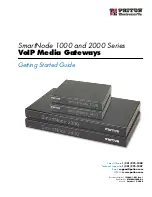
08 bandscope
49
More User-friendly bandscope
The FFT (Fast Fourier Transform) bandscope adopted on the TS-990S, which offers outstanding performance in “high
spectral display refresh speed” and “adjacent signal discriminability (frequency resolution)”, has become an important
feature for more practical use of the transceivers.
To further enhance the practical use of the bandscope on the TS-890S, we have significantly brushed up both
processing of signals from the RF unit as well as the software.
Differences with the TS-990S as an FFT Bandscope
The bandscope of the TS-990S analyzes signals in a 10 kHz frequency width and repeats in this span to obtain a
spectral display. This is a suitable method when the bandscope receiver adopts a superheterodyne system. The display
refresh speed increases when the span is narrower, while the speed decreases when the span is wider as it takes a
longer time to obtain the spectral display for the entire screen.
To achieve high-speed updates to the display irrespective of the span settings, a new IF sampling system has been
developed for the TS-890S.
The IF signal for the 8.248 MHz center frequency for down conversion is digitized at a sampling frequency of 39 MHz
using a 14-bit A/D converter and converted into I/Q signal via the FPGA digital down converter.
The I/Q signal covers a bandwidth range that is ±250 kHz of the maximum span, and the DSP performs calculation of
FFT and display spectrum.
Fig. 60 Configuration of Bandscope Receiver
3 Types of Scope Display Modes
The bandscope of the TS-890S offers three different scope display modes.
● Auto Scroll Mode (AUTO SCROLL MODE)
While the display is similar to the Fixed Mode with the lower and upper limits fixed for the displayed frequency, the range
of the scope scrolls automatically in this mode when the marker exceeds the lower or upper limit.
Screen1
Screen2
Screen3
















































